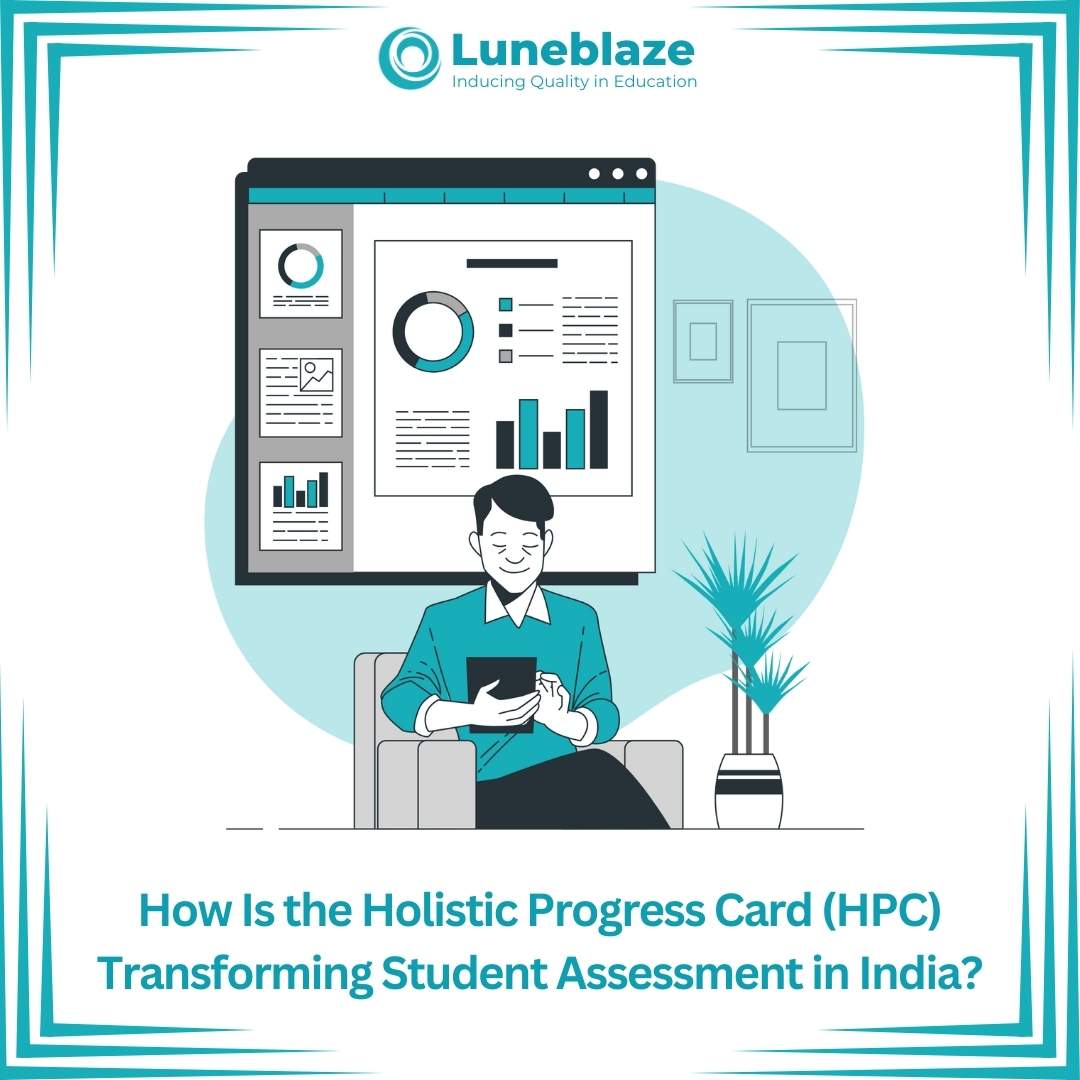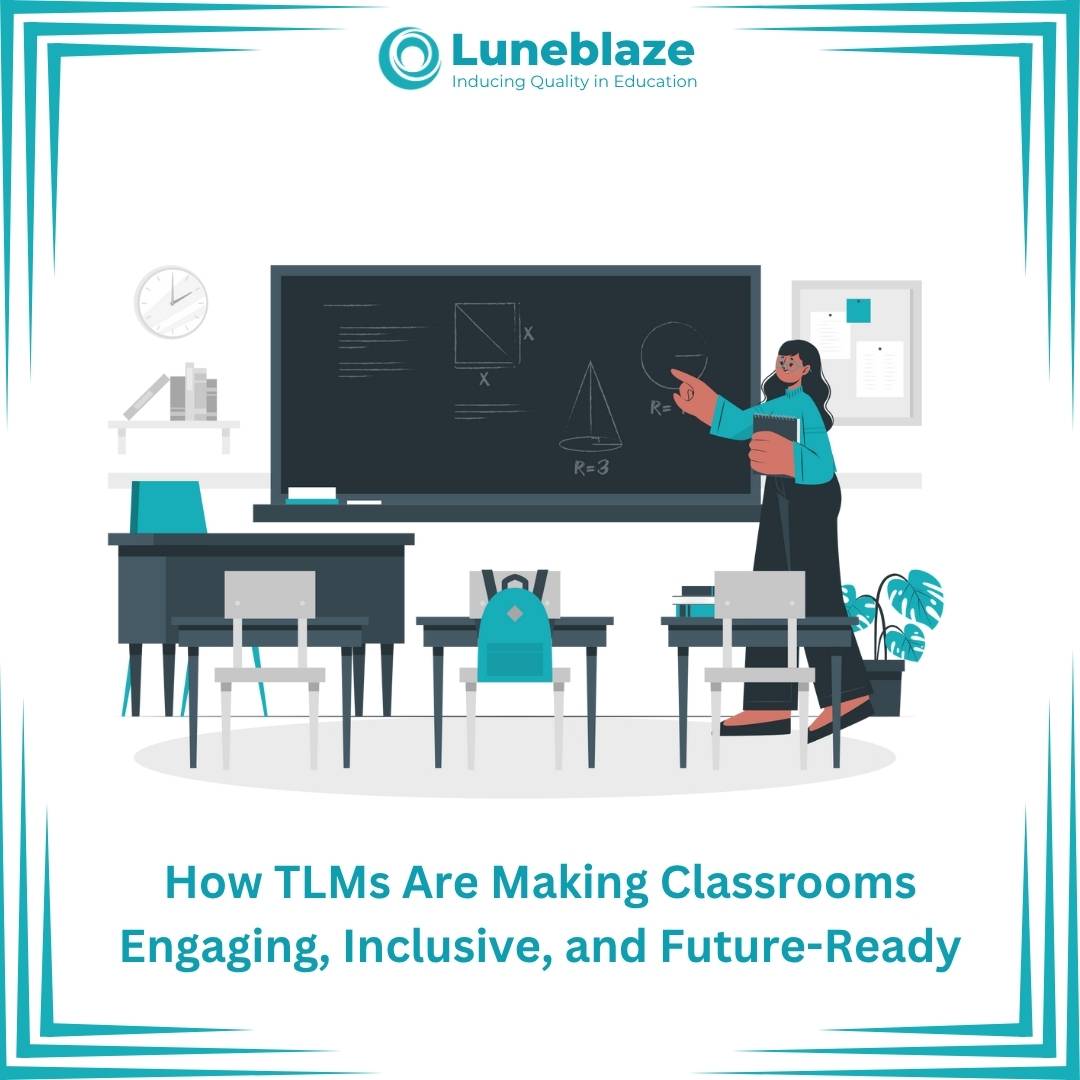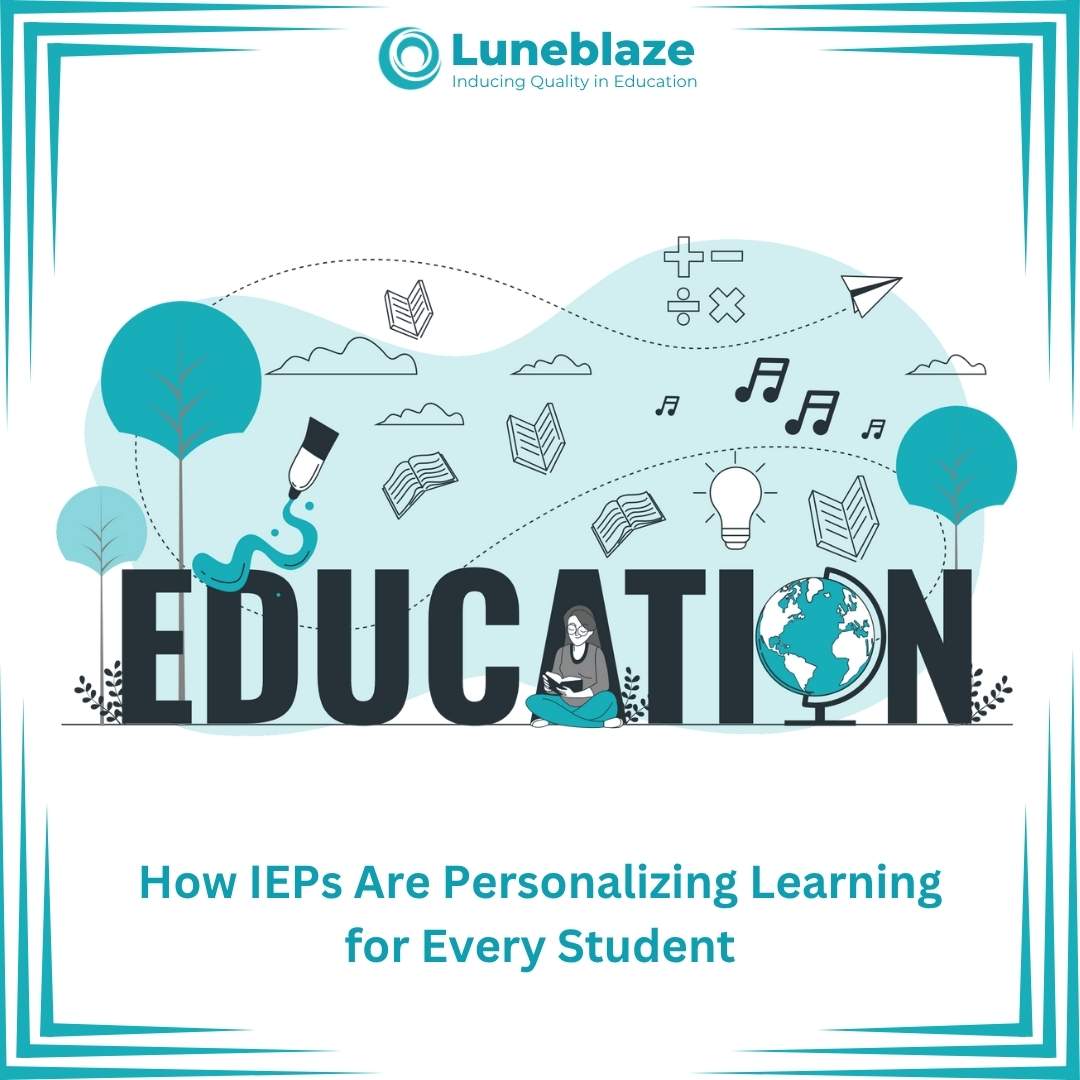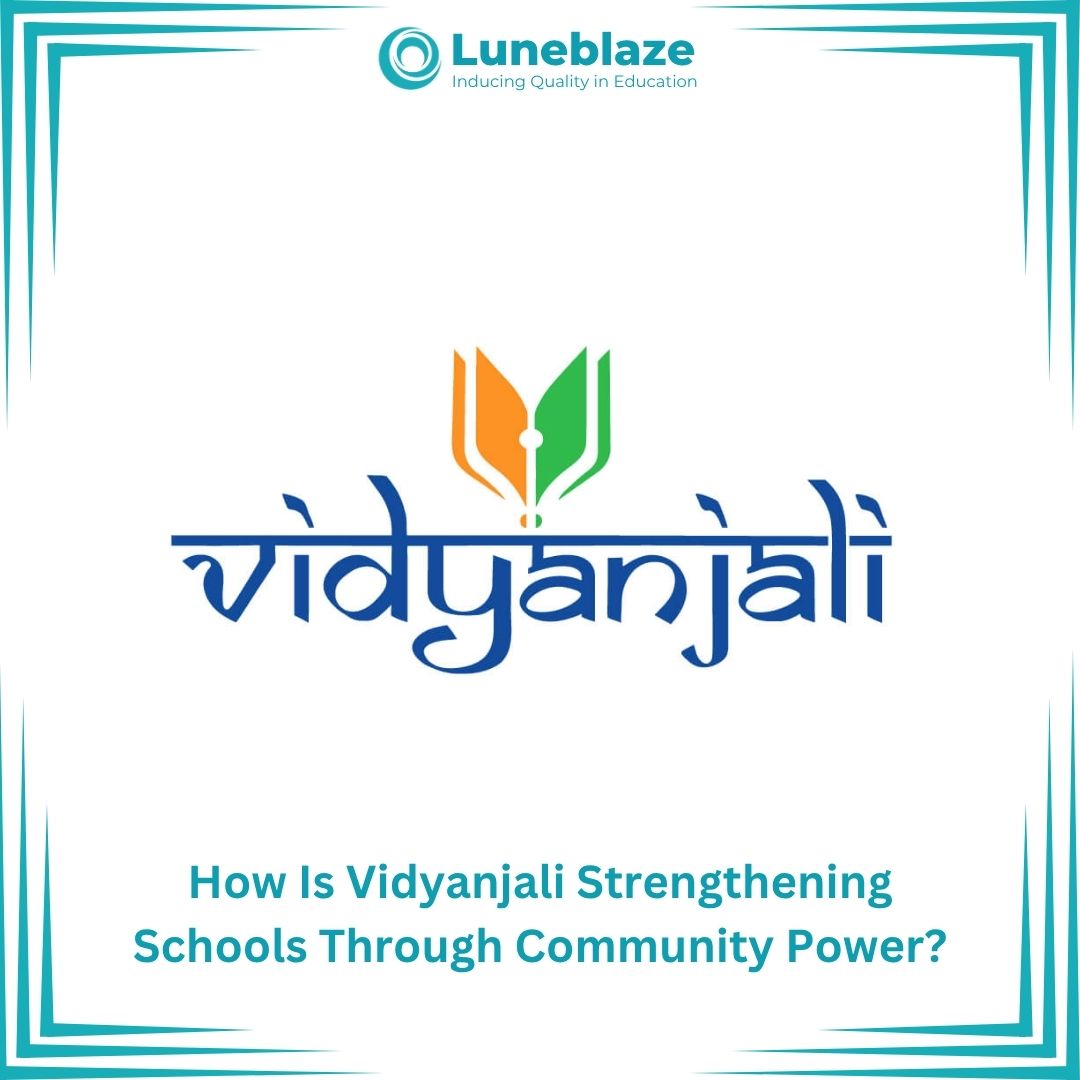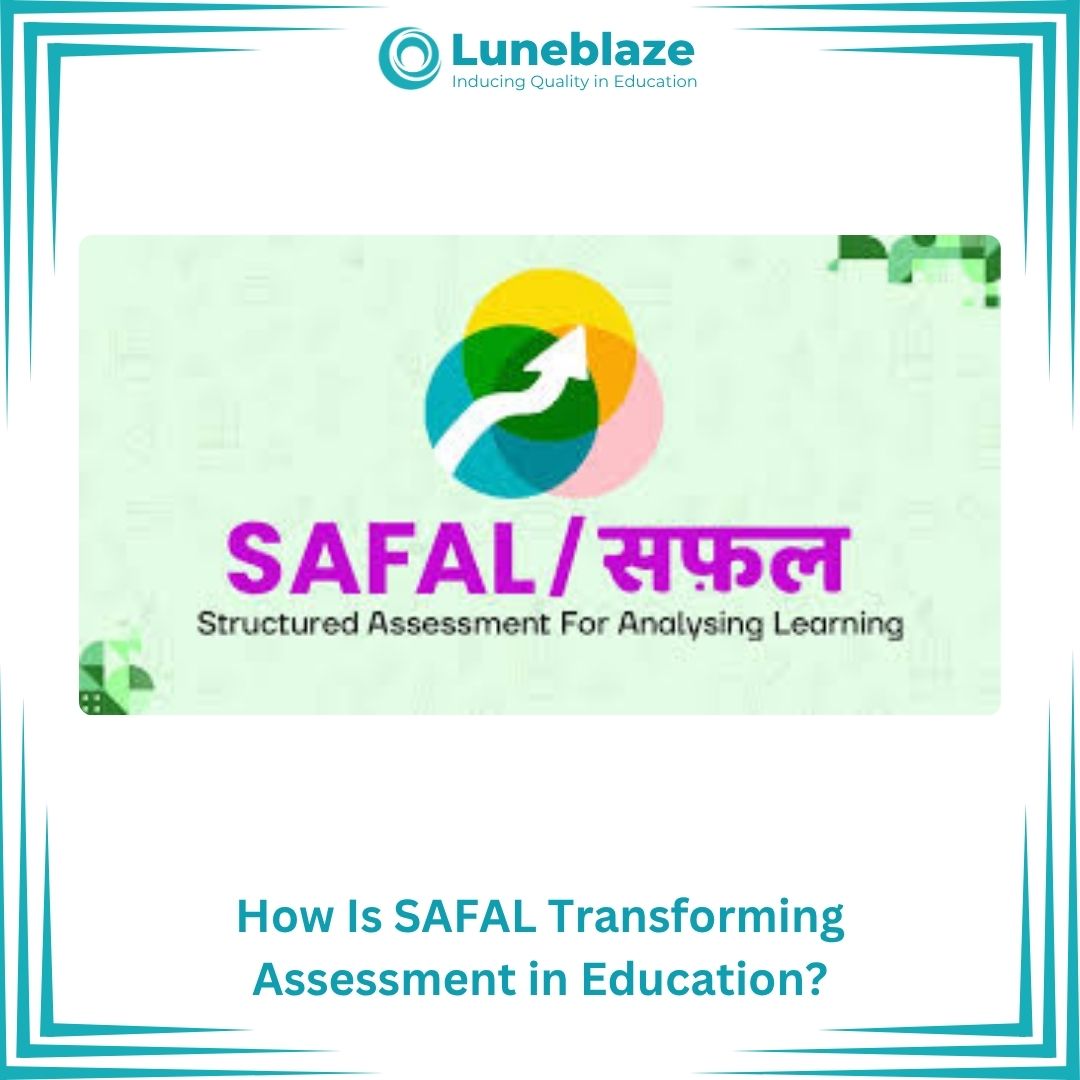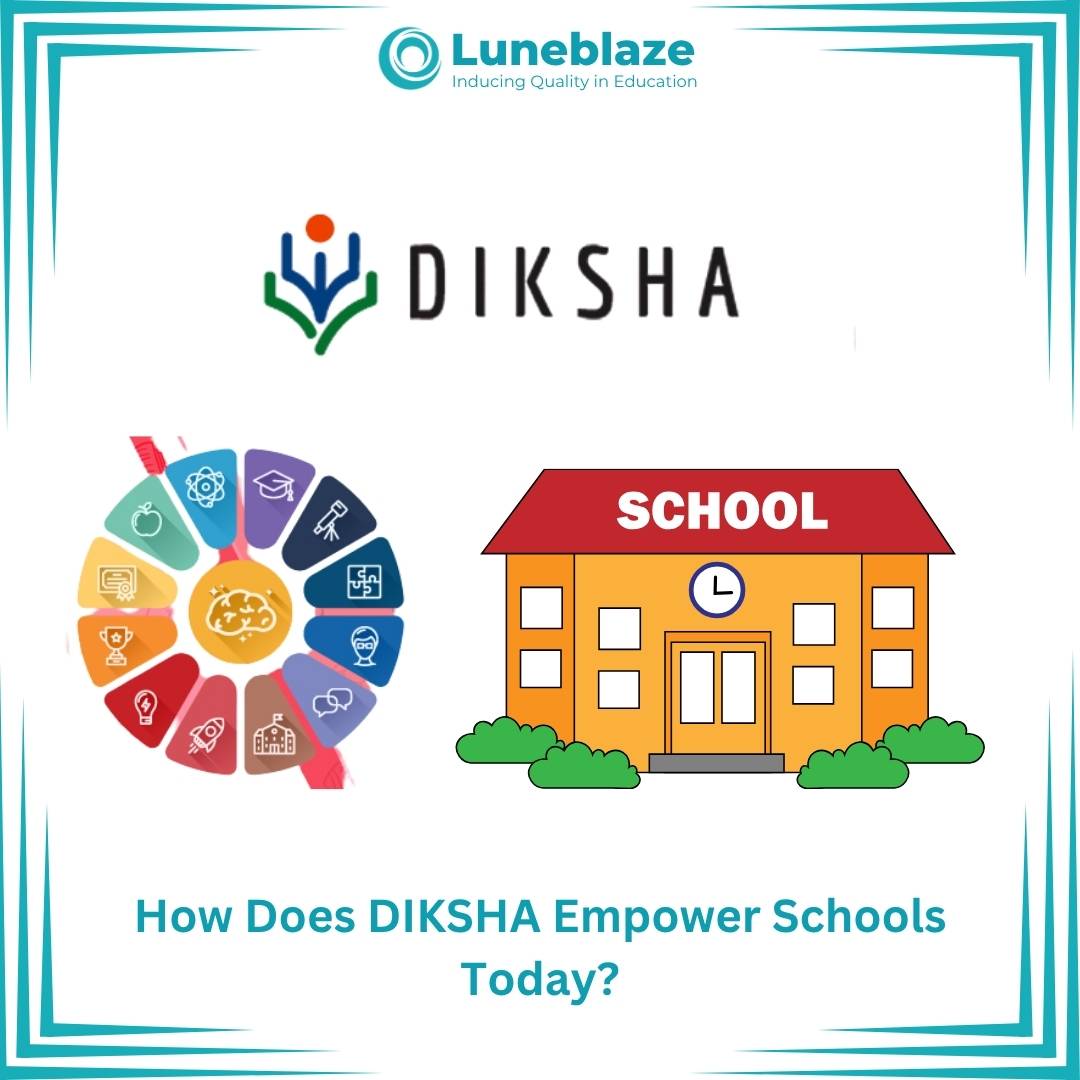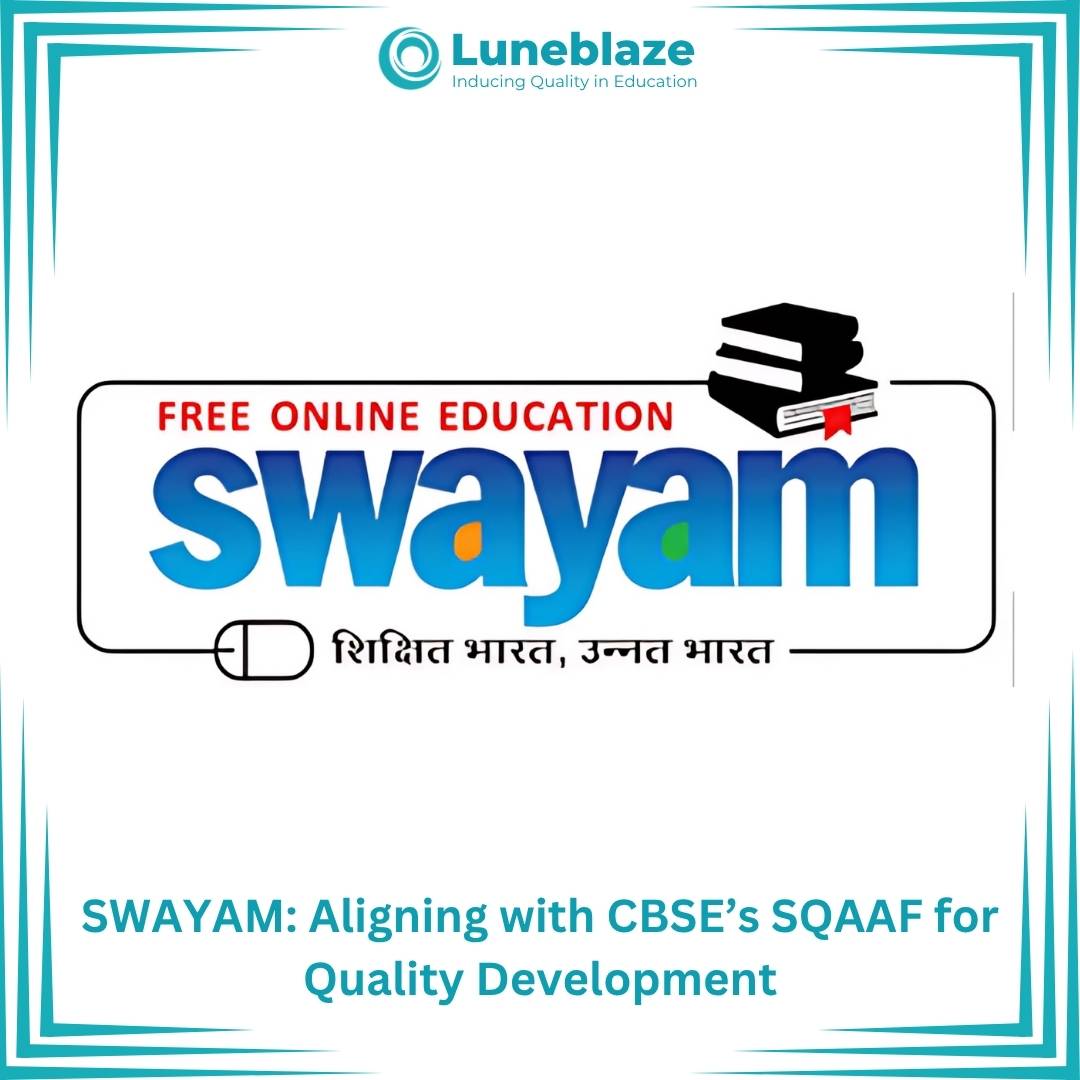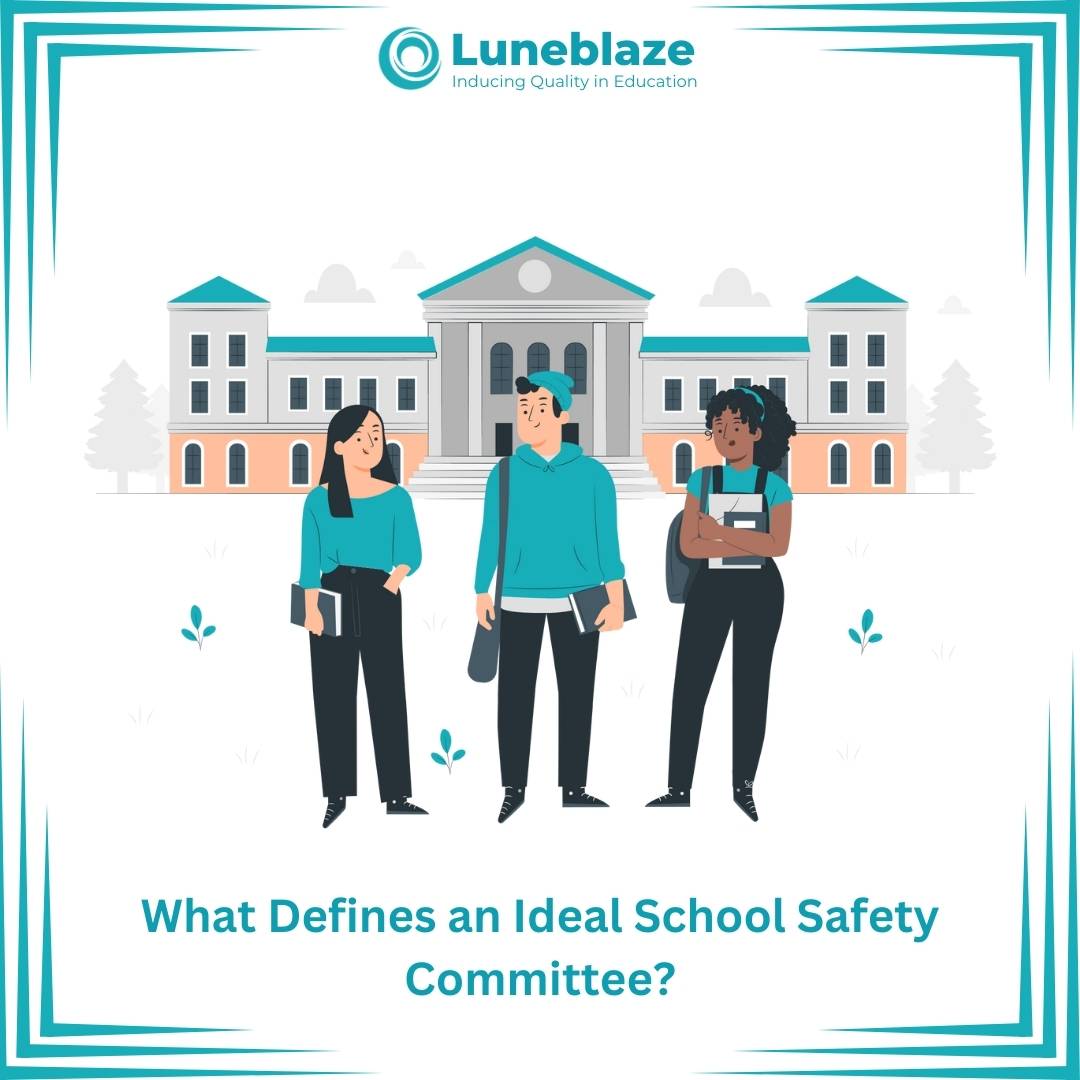Unveiling the Seven Pillars of CBSE's SQAA Framework
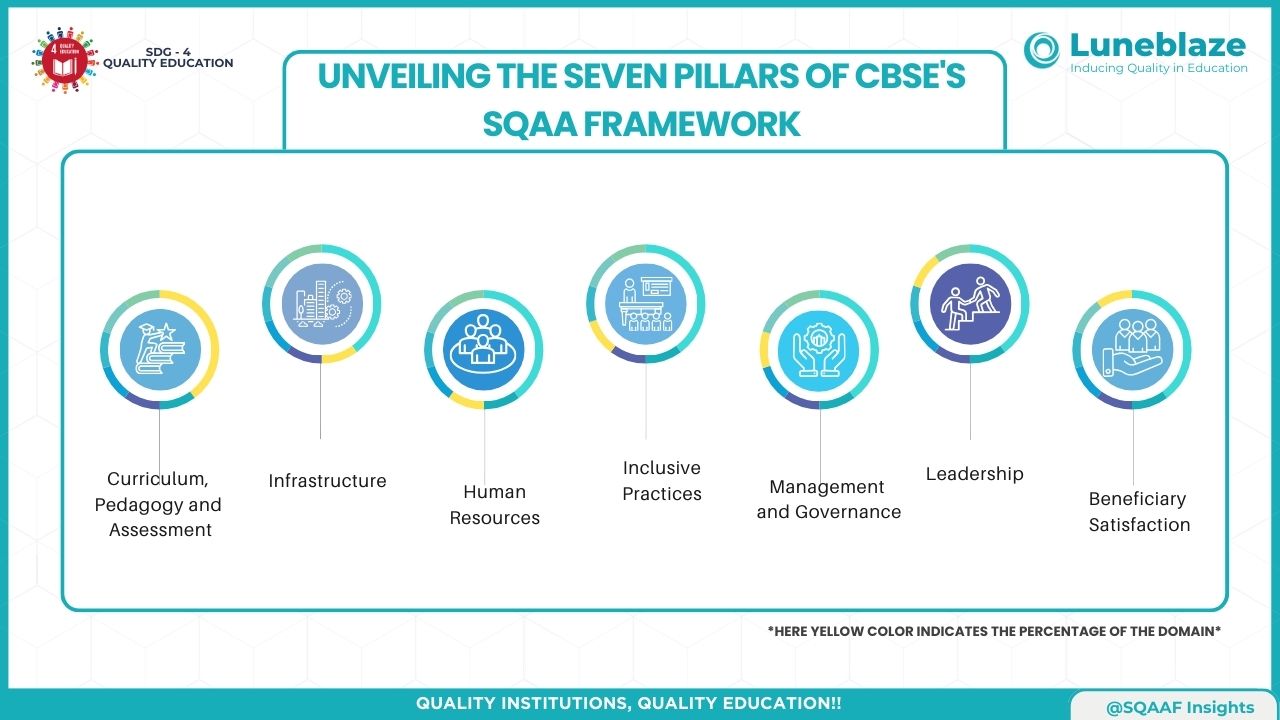
Oct 09, 2023
In pursuit of building a more robust and forward-thinking educational landscape, the Central Board of Secondary Education (CBSE) has introduced the School Quality Assessment and Assurance (SQAA) Framework. This transformative initiative marks a paradigm shift from routine compliance checks to a holistic approach that nurtures school ecosystems through structured reflection, strategic improvement, and sustained excellence.
Rooted deeply in the transformative vision of the National Education Policy (NEP) 2020, the SQAA Framework empowers schools to become dynamic, learner-centric institutions. Rather than functioning as a mere evaluation tool, it serves as a catalyst for continuous school development by promoting transparency, evidence-based decision-making, stakeholder participation, and a culture of innovation. It encourages schools to evolve beyond conventional pedagogical structures, supporting them in becoming institutions where educational equity, quality, and sustainability are interwoven into everyday practice.
At the foundation of the SQAA Framework are seven key domains, often termed the "seven pillars" of quality assurance. These domains comprehensively cover every aspect of school functioning and together provide a multi-dimensional perspective on institutional performance. Each domain is assessed using standards, performance indicators, and rubrics to ensure objectivity and uniform interpretation.
1. Curriculum, Pedagogy, and Assessment (Weightage: 40%): The "Curriculum, Pedagogy and Assessment" domain focuses on how students achieve excellence through a wide range of inclusive and innovative policies, practices, and well-defined outcomes. This allows for holistic, cohesive, and free learning spaces. The domain encompasses various student-friendly systems and operations that make education a functional and living entity, covering both academic and non-academic processes and products. Key aspects include teachers’ subject knowledge, understanding of student learning, creation of positive classrooms, teacher-student interactions, teaching-learning methodologies, integration of arts, values, life skills, sports, use of interdisciplinary approaches, informal assessments, continuous staff development, inclusivity, and fostering a culture of innovation.
1.1 Curriculum Planning: This sub-domain ensures that the school's curriculum planning aligns with national educational policies (NCF and NEP) and CBSE recommendations, fostering skills for lifelong learning and global citizenship.
1.2 Teaching Learning Processes: This focuses on maintaining optimal teaching days and hours, adhering to teacher-student ratios, and empowering teachers to use diverse, joyful, and student-centric teaching methods aligned with NCERT Learning Outcomes.
1.3 Student Enrichment, Skill based/Vocational Education Programmes embedded in the Annual Curriculum and Pedagogical Plan: This sub-domain ensures ample opportunities for art education, vocational training for entrepreneurial and employability skills (including internships), and activities enhancing literary, reading, creative, critical thinking, scientific, communication, and leadership skills, alongside mandatory digital, financial, citizenship, information, media, environmental, and health literacy.
1.4 Mainstreaming Physical Education and Sports: This emphasizes a strong policy and leadership for promoting health and physical education, ensuring engaging teaching and learning of PE, sports, yoga, and other fitness activities, and fostering inclusive practices in these areas for all students.
1.5 Values and Ethos: This focuses on nurturing values through a climate of care, compassion, and respect, welcoming diversity, creating school pride, and inculcating pride towards Indian heritage and civilization, encouraging duties towards society, living beings, and nature.
1.6 Student Performance, Assessment of Learning Outcomes and Feedback and Learning Enhancement Programme: This ensures high student attendance and reduced dropouts, teachers using multiple assessment modes (Assessment of Learning, For Learning, As Learning), defined procedures for regular student performance assessment, and the use of assessment results (e.g., NAS/SLAS/SAFAL) to ensure student progress on their developmental continuum.
1.7 Early Childhood Care and Education and Foundational Literacy and Numeracy: This sub-domain focuses on organizing content and teaching-learning material based on NCF for Foundational Stage and defined Learning Outcomes, adopting inclusive, play-based, engaging, contextual, and experiential pedagogy, designing age-appropriate assessments, and creating an ecosystem for achieving Foundational Literacy and Numeracy (FLN) targets for all children.
2. Infrastructure – Adequacy, Functionality, and Aesthetics: The "Infrastructure: Adequacy, Functionality and Aesthetics" domain is dedicated to ensuring that schools provide a safe, secure, clean, and green environment for all students. It focuses on the provision of facilities related to space, safety requirements, health management, and aesthetic appeal. The goal is to create learning spaces that foster a happy environment conducive to learning. This domain specifically addresses the adequacy, functionality, and aesthetics of all enabling resources, including crucial provisions for accessibility for differently-abled individuals.
2.1 Classrooms, library, laboratories, computer labs, ICT facilities and rooms for different activities: This covers ensuring sufficient, conducive, and accessible classrooms, a library that supports the educational program, well-equipped laboratories for learning activities, adequate computer and ICT facilities for administrative and educational purposes, and sufficient activity rooms for arts (art, sculpture, music, dance, theatre).
2.2 Principal’s Office, Staff room and Administrative Offices: This ensures adequate space for the Principal, staff, and administrative offices, designed for functionality and aesthetics.
2.3 Infirmary and Health Management Facilities: This focuses on effective preventive healthcare and health management facilities, including a sick room, first aid, and a nurse/counselor.
2.4 Water, Sanitation Facilities and Waste Management: This ensures safe drinking water, adequate and separate sanitation facilities for all genders, and effective waste management practices, including menstrual waste disposal and eco-friendly approaches.
2.5 Furniture: This covers providing adequate, safe, comfortable, age-appropriate, and aesthetically designed furniture, including provisions for differently-abled students.
2.6 Lighting and Ventilation: This ensures the school building is designed for natural lighting and ventilation, adhering to international norms for visual comfort and energy efficiency.
2.7 Eco friendly orientation and integration of Organic Living in Curriculum: This promotes eco-friendly/green practices and inculcates an organic lifestyle among students through initiatives like compost pits, rainwater harvesting, and eco-clubs.
2.8 Safety Provisions: This ensures whole-school safety and security as per statutory norms, including disaster management measures and a "Zero Tolerance Policy" against negligence.
2.9 Playground and Sports Facilities: This ensures the availability of indoor and outdoor sports facilities that support all students, including "divyang" (students with disabilities).
2.10 Hostels (Only for Residential Schools and separate for Boys and Girls): This sub-domain is specific to residential schools and covers:
Sufficient rooms/dormitories, recreational spaces, washrooms, drinking areas, residence of warden, residence of pastoral care staff, visitors’ room, laundry room, storage room for food items (perishable and non-perishable ) and additional bedding, and common room: Ensuring adequate and well-maintained living and common spaces.
Separate clean and hygienic Kitchen and Dining Area: Maintaining high standards of hygiene in food preparation and dining.
Fostering a culture of cleanliness and hygiene: Promoting and maintaining cleanliness throughout the hostel premises.
Providing for safety and security of students: Implementing comprehensive safety and security measures within the hostel environment.
Students’ physical, mental, socio-emotional and intellectual well-being is taken care of by intensive pastoral care programmes: Ensuring holistic well-being through structured pastoral care.
2.11 School Canteen (For Day Schools): This ensures a well-managed, clean, hygienic, and safe canteen that provides nutritious food and prohibits junk food.
2.12 Transport and Escort Facility: This covers providing optional, safe, and reliable transportation facilities, with trained staff and safety features in vehicles.
3. Human Resources: The "Human Resources" domain emphasizes that staff are an integral part of any school, responsible for ensuring student learning outcomes across all curricular areas and for facilitating the connection between parents, students, and the school. This domain initially addresses the fundamental aspects of recruiting adequate staff and then extends to cover Service Rules and Records, Recruitment Practices, Academic Supervision, and Continuing Professional Development. It encompasses all school employees, both teaching and non-teaching. The domain particularly highlights policies and practices that foster a conducive, nurturing work environment, promoting and encouraging innovation and collaboration. Furthermore, it underscores the instrumental role of stakeholder involvement, including family and community partnerships, in ensuring that students achieve their specific and targeted goals. Parents, students, alumni, and the broader community are explicitly recognized as valuable resources that support the school in achieving its educational objectives.
3.1 School Staff – teaching and non teaching: This covers the recruitment of qualified and competent staff, a strong induction program, supportive staff appraisal for positive student outcomes, capacity building for teachers through collaborative and experiential processes, adherence to salary and allowance norms, and fostering a positive organizational culture that strengthens employee-leader relationships.
3.2 Parents: This recognizes parents as equal and vital partners in the qualitative growth of the school, encouraging their involvement and feedback.
3.3 Students: This focuses on student engagement as fundamental to schooling outcomes, involving them in school improvement activities and fostering their participation.
3.4 Alumni: This involves alumni as stakeholders in quality education and school development, leveraging their experiences and resources.
3.5 Community: This emphasizes fostering effective school-community partnerships for student achievement and well-being, and facilitating volunteerism through initiatives like Vidyanjali.
4. Inclusive Practices: The "Inclusive Practices" domain asserts that schools must fundamentally transform their systems and processes to support and address the individual needs of every child. This requires adopting an effective model of inclusive education and cultivating an environment where all students have ample opportunities to flourish. Inclusive schools are characterized by their commitment to valuing all students as equal members of the school community, actively engaging them in a wide range of academic and non-academic activities, irrespective of their abilities.
4.1 Barrier free environment: This focuses on providing an equitable, inclusive, and accessible physical environment for all students, especially "divyang" and those from diverse socio-economic backgrounds, ensuring safe and accessible infrastructure.
4.2 Games, Sports and other Recreational Facilities: This ensures indoor and outdoor games, sports, and recreational facilities are provided and adapted for "divyang" and students from different socio-economic backgrounds, promoting their participation alongside peers.
4.3 Transportation Facilities: This focuses on providing safe transportation facilities specifically for "divyang" students, with trained staff and accessible features in school vehicles.
4.4 Overcoming Attitudinal Barriers: This aims to foster a culture of compassion, care, and empathy towards all students, breaking down stereotypes through sensitization programs and promoting positive attitudes towards diversity.
4.5 Self Special Equity Projects: This specifically highlights self-defense training for girls to instill confidence, promote physical fitness, and enhance emotional well-being, making it a mandatory part of the curriculum.
5. Management and Governance: The "Management and Governance" domain posits that effective leadership begins with a collaboratively developed vision involving all stakeholders. It emphasizes that robust management and governance systems ensure that processes and practices are consistently aligned with this vision and deeply embedded within the school's operational fabric. The core values and beliefs of the school are intended to shape a cohesive culture where every individual embodies these principles. This domain covers policies related to institutional planning, the conservative use of resources, sound financial management, and fostering interconnectedness within the school to ensure efficiency. Importantly, these policies are designed to be tempered with human values of care and compassion.
5.1 Vision and Mission Statement: This focuses on ensuring the school's management and governance system is driven by Standard Operating Procedures (SOPs) aligned with its collaboratively developed vision and mission.
5.2 Institutional Planning: This emphasizes that the School Institutional Plan is based on student and community needs, and the optimal utilization of all available resources.
5.3 Effective Coordination: This highlights establishing effective coordination within the school and with the external community to achieve desired goals, fostering cooperation and collaboration.
5.4 Resource Management: This focuses on facilitating the optimal use of resources, creating a supportive environment for school growth, and implementing practices to reduce, reuse, and recycle.
5.5 Relationship Management: This nurtures and sustains meaningful relationships with all stakeholders (students, parents, alumni, community, vendors) to foster increased student achievement, relying on effective communication and feedback.
5.6 Activity Management: This accelerates and manages the workflow of all school activities, ensuring planning, scheduling, and resource allocation, with a focus on safety and technology utilization.
5.7 Data and Record Maintenance: This assists in making informed decisions for increased efficiency and productivity by maintaining accurate, accessible, and secure records (physical and digital) across all school operations.
5.8 Oral/Virtual/Online and Written Communication: This facilitates school staff staying connected with stakeholders and the community anytime, anywhere, through various transparent and efficient communication channels.
5.9 Financial and Fee Administration: This ensures the financial and fee administration system is based on rationality, admissibility, and allocability, with transparent budgeting, internal controls, and regular monitoring to prevent misuse.
5.10 Admission Process: This ensures the admission policy aligns with Board and RTE Act norms, is non-discriminatory and transparent, and actively includes Out of School Children (OoSC) and children from deprived communities.
6. Leadership: The "Leadership" domain emphasizes that school leadership is a powerful force in realizing the school's mission and fostering student learning and development. It highlights the pivotal role of Principals in providing instructional leadership. A visionary leader is expected to understand how learning occurs, create conducive learning environments, and view knowledge as personal experiences constructed within the shared context of teaching and learning, rather than merely as information embedded in textbooks. Such a leader must also be sensitive to the social, professional, and administrative contexts necessary for effective operation and develop appropriate competencies to facilitate scaffolding. Beyond intellectual development, an effective leader cultivates artistic and aesthetic sense in students and addresses the diverse learning needs of all children, including those who are marginalized or differently abled. A leader consistently strives for innovation across various practices and activities, providing comprehensive support for new ideas to flourish. Furthermore, the framework positions appraisal as a continuous educational process for leaders.
6.1 Pedagogical Leadership: This focuses on how the School Leader builds intellectual and professional capital for teachers to set the direction for school improvement and student learning, creating conducive learning environments and fostering artistic and aesthetic sense.
6.2 Collaborative Leadership: This emphasizes engaging shared intelligence to co-create learning institutions, involving the school leader in forming teams, defining roles, and partnering with external organizations to achieve student outcomes.
6.3 Systems for Ongoing Quality and Change Management: This covers how the School Leader fosters a climate that supports the achievement of learning outcomes, demonstrates responsibility and accountability in building a culture of equitability, inclusivity, and systems thinking, and provides opportunities for teachers and students to be creative, divergent thinkers, and entrepreneurial.
7. Beneficiary Satisfaction: The "Beneficiary Satisfaction" domain asserts that schools achieve success when they garner the understanding, commitment, and support of all stakeholders. It posits that school personnel should actively seek opportunities for collaboration to transform the institution into a hub of excellence. The school is expected to foster effective communication and interpersonal skills, which in turn lead to improved social skills among all members. The benefits of involving all stakeholders in decision-making are manifold: schools can cultivate collaboration with community stakeholders to bolster student learning, establish formal channels for listening and communication, and productively leverage collective knowledge and skills to enhance the school's operations and improve student learning outcomes.
7.1 Satisfaction of Students: This tracks and assesses student satisfaction on the learning experiences provided to them at all stages of engagement, both inside and outside the classroom.
7.2 Satisfaction of Staff (Teaching and Non-Teaching): This tracks and assesses staff satisfaction regarding working conditions, safety, recognition, opportunities for creativity, growth, and sense of belongingness.
7.3 Satisfaction of Principal: This examines how intrinsic and extrinsic factors influence the job satisfaction experienced by the principal.
7.4 Satisfaction of Parents and Alumni: This focuses on maintaining a healthy relationship with parents and alumni and assessing their satisfaction through connection, engagement, and interaction.
7.5 Satisfaction of Community: This ensures community satisfaction by establishing a culture of meaningful and sustainable community engagement in school programs.
7.6 Satisfaction of Management: This assesses management satisfaction through the stakeholders' attitude and behavior towards the institution, linking internal governance effectiveness to external perceptions.
Scoring and Maturity Levels: Each domain includes a set of standards measured across four maturity levels:
Level I: Inceptive – Basic, ad hoc practices with limited systemization
Level II: Transient – Emerging systems with some consistency and reflection
Level III: Stable – Documented, monitored practices aligned with goals
Level IV: Dynamic-Evolving – Benchmarked excellence with innovation, mentoring, and systemic impact
Schools are encouraged to evaluate themselves on this continuum and aim for gradual, evidence-backed progression. Supporting documents and practices are essential to validate the maturity level claimed by the school.
Why the SQAA Framework Matters In an educational landscape that demands agility, inclusivity, and accountability, the SQAA Framework provides schools with a systematic path for self-improvement. It empowers institutions to not only assess their present status but to envision and work toward an aspirational future. Moreover, it reinforces a culture of shared ownership, collaborative innovation, and measurable progress.
Conclusion
The seven domains of the SQAA Framework serve as a comprehensive blueprint for excellence in school education. By internalizing these standards and integrating them into daily operations, schools move closer to realizing the NEP 2020 vision of a just, equitable, vibrant, and knowledge-driven society. Adopting the SQAA Framework is not a matter of compliance; it is a conscious choice to pursue quality with purpose, vision, and integrity.
To assist schools in their SQAAF Journey, Luneblaze provides a comprehensive AI-enabled end-to-end solution to schools for all their accreditation criteria needs, be it documents & evidence creation, self-assessment filing support on the CBSE SQAAF portal, workflow management, faculty trainings, audits, and consultancy support.
Together, let’s raise educational standards. Partner with Luneblaze for SQAAF success. Reach out: sqaaf@luneblaze.com
Trusted by
100+
Institutions
worldwide
since 2017
Get started with Accreditation Excellence
Explore how our AI-enabled accreditation solution simplifies the accreditation journey

